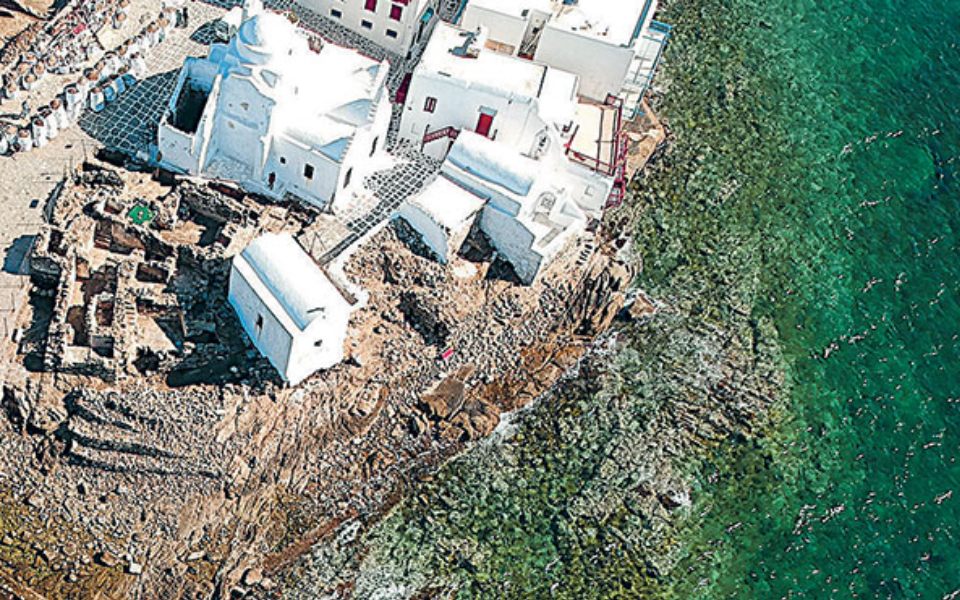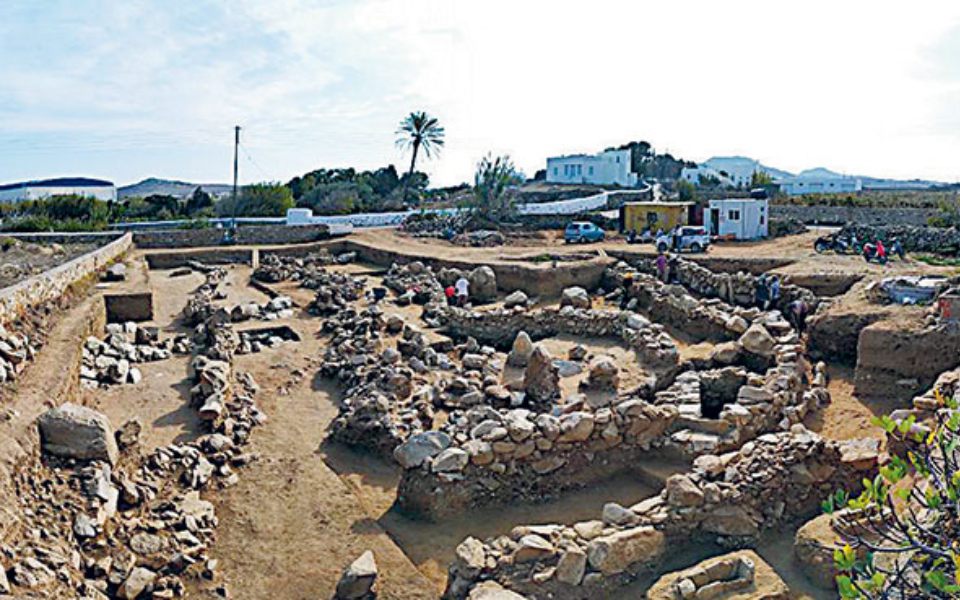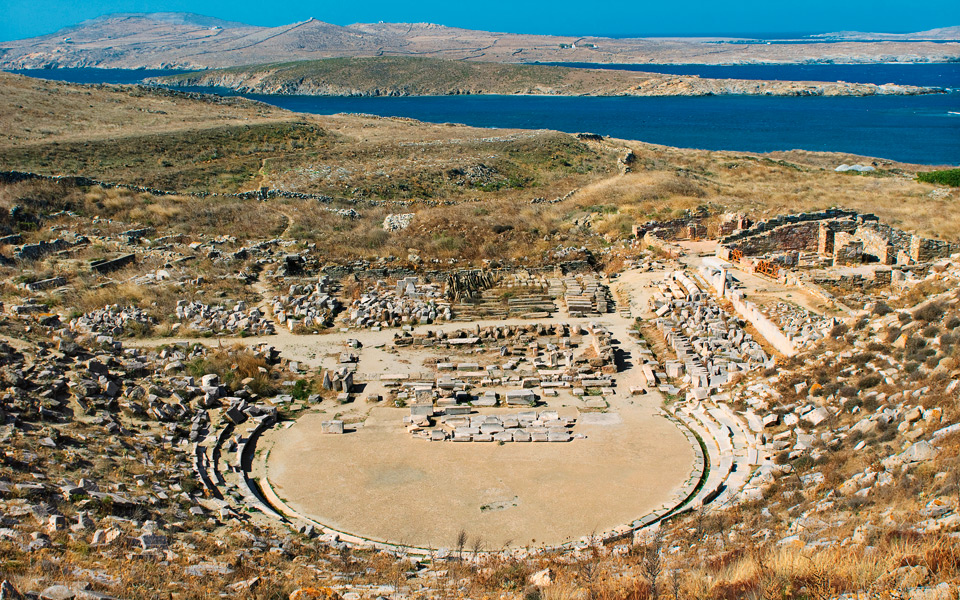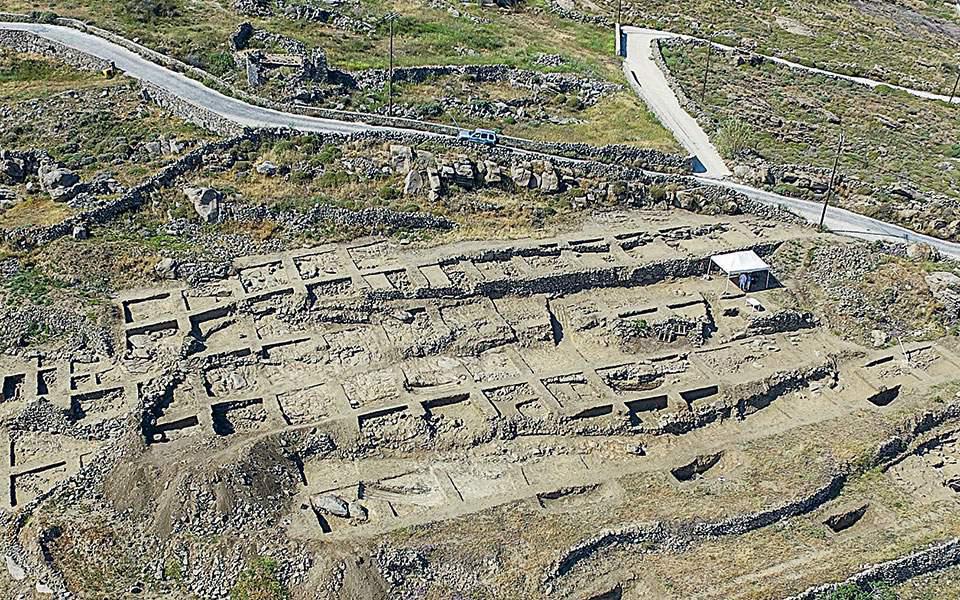When the dark clouds cast by the coronavirus finally begin to disperse, and we begin counting our country’s losses on all levels, including tourism, we’ll have a clearer idea of what we can do to spark an economic recovery. The tourism season officially begins in April, but no one is feeling particularly optimistic at the moment. This dark adventure seems unending; the country announces new measures every day and the current number of reservations is disheartening.
Nevertheless, the Cyclades remain a top destination choice for Greeks and foreigners alike. What will revitalize local communities when we recover? The answer lies in the islands’ cultural wealth – their museums, exhibitions, excavations and cultural activities – and how we can best make use of it.
Long before COVID-19 entered our vocabularies, Dimitris Athanasoulis, the director of the Ephorate of Antiquities of the Cyclades, was already talking about cultural wealth management as key to development as he planned a rejuvenation of the Cycladic museum scene.
He stirred the public’s interest in the Archaeological Museum of Mykonos with temporary exhibitions such as “Vanity” in 2016 and NEON’s “The Palace at 4 a.m.” in 2019, as well as through an unprecedented undertaking on the neighboring island of Delos, where visitors to the archaeological site had the chance to see renowned British artist Antony Gormley’s sculptures standing alongside antiquities.
Still planned for this spring at the Archaeological Museum of Mykonos is the already successful exhibition “From Homer’s World: Tinos and the Cyclades in the Mycenaean Era,” organized by the Ephorate of Antiquities of the Cyclades in collaboration with the Piraeus Bank Group Cultural Foundation. The exhibition was first presented in 2019 at the Museum of Marble Crafts on the island of Tinos, where it attracted over 26,000 visitors; it was then taken to the Benaki Museum in Athens in December of 2019.
After its display of Mycenaean antiquities from the Cyclades, the Mykonos Archaeological Museum will host a large-scale exhibition dealing with the 1821 Revolution, focusing on Mykonos’ contribution, led by Manto Mavrogenous, to this struggle. This exhibition is scheduled to take place in the winter of 2020.

Archaeological Discoveries on Mykonos
In addition to museum exhibits, there are excavations – many triggered by construction on the popular island. “In our monitoring of construction activities in Mykonos – which have not abated even during the crisis – we encounter many things when thoroughly investigating the sites that might have otherwise escaped our attention,” Athanasoulis says, “such as, for example, the ancient agricultural landscape. The terraces of dry-stone walls that are constantly being uncovered resemble those of the contemporary Cycladic landscape; in ancient times, they shaped the fields destined for agriculture. These humble elements of the Cycladic agricultural landscape that are uncovered during our rescue excavations, dating back to the Classical and mainly Hellenistic periods, indicate a continuum.”
Remains of settlements dating from the Early Cycladic II period (2800-2300 BC) have been uncovered on Mykonos, at a site near Aghios Ioannis Diakoftis. According to Athanasoulis, the installation covers a large area, and further important parts of these settlements will be revealed in neighboring excavation spots as well.
“All investigations point to the archaeological importance of Mykonos, which, overshadowed by the Delos site, had never properly been assessed. Mykonos possesses an important cultural heritage which dates back to the first great Cycladic civilization, the Early Cycladic period, and evidence of settlement has now been revealed. Mykonos’ role in the Mycenaean era has been recognized. I’m referring specifically to the burial vaults uncovered by Panagiotis Chatzidakis on the Aggelika site, but we’re continuously identifying new sites.”

Mykonos Through the Ages
There is yet another surprise: in Mykonos’ Hora, rescue excavations have brought to light artifacts from the Byzantine Empire. During the cleanup of two abandoned public administration buildings, a medieval ruin was uncovered, along with formerly unknown portions of the ancient city of Mykonos.
“The walls built during the Classical and Hellenistic periods are very similar to those found in Delos. And in the deeper layers of the Mykonos Kastro area, a prehistoric habitation was uncovered. During the cleanup that preceded the restoration of the castle near the Church of Panagia Paraportiani, we found prehistoric objects inside carved-out areas in granite rock on the lower layers. This impressive continuity has yet to be assessed, as it is the first time that vestiges from the Neolithic, Cycladic, Mycenaean, Ancient, Classical, Hellenistic and Byzantine eras have been uncovered on such a large scale in Mykonos.”
A bronze Byzantine coin (870-879 AD) from the reign of Emperor Basil I was found during the Kastro (Castle) dig, which confirms a onetime Byzantine presence on the island. “While we were exploring… we identified more sites dating back to the 6th and 7th centuries AD and one of them revealed an impressive treasure: six bronze jugs that had been buried to protect them from a threat – probably an Arab raid during the 7th century. These items had been concealed not for their contents, but rather for the precious metal they were made from. However, their owner never made it back to them.”
For a long time, it was thought that the Byzantine Empire had been present on the nearby island of Naxos and that the other islands had been left deserted: “As it turns out,” says Athanasoulis, “the Byzantine Empire did not abandon any island. They were all part of a network that protected the Empire’s land. The Cyclades had great strategic value regardless of their size.
“Some of them, like Mykonos, were uninhabited for a time, probably having lost their residents during the Middle Byzantine Period. Yet today, the constant and uninterrupted Hellenic presence in the Aegean on the Cyclades is being documented. The archaeological map of Mykonos is notably changing as it is constantly being enriched with new sites that fill the existing gaps and indicate that the island has been in constant use from the Neolithic era until today. It’s certain that more findings and more information will come to light in the area of Mykonos Town.”

© Shutterstock
Delos and Rineia: money laundering, slave markets and brothels
Athanasoulis points out that, in ancient Greece, the island of Mykonos was dependent on Delos, whereas today Delos is an archaeological site belonging to the municipality of Mykonos.
In its years of glory, Delos was an important religious and commercial center and a tax haven at the center of numerous business activities: “The City of Delos is a product of the Hellenistic period. It became a major trading port and urban center with a great concentration of wealth. For a long period of time, city activity was exempt from taxes and duty charges: it was a city of money laundering, slave markets, villas and brothels. As the island was deemed sacred, deaths and births on its soil were outlawed. Hence, those who were about to die were brought to the nearby island of Rineia, eventually turning it into a vast cemetery.”
Rineia is yet another excavation front overshadowed by Delos: “Last year was the first time when we began systematically recording all the sites on Rineia. First we establish small sections, mainly for topography and tracking and for surface surveying of the site.”
Athanasoulis sounds a pragmatic note: “We don’t know how the coronavirus situation will develop, how long it will last, or what will happen in the spring. We may need to postpone a few activities.” But the ephorate, he says, will continue their work: “In the last five years, we worked on the maintenance of museum infrastructure and now we are moving on to the restoration of our exhibitions.” According to him, the large project in Naxos that will turn the medieval castle into an open air museum is very important, and it will greatly improve tourism on the island.
Sikinos became a more visible tourist destination thanks to its promotion of the Episkopi excavation. In Koufonissi, the exhibition “Look Opposite” attracted visitors to the island; in Kimolos, it was a contemporary art exhibition.
“The Ephorate strives to function as a gatekeeper of each island’s heritage and memory, and this is why we set up museums in places where there were none. I believe the creation of an Archaeological Museum in Kythnos next year will bring many benefits to the island. Santorini is planning the renovation of its archaeological museum, and Tinos is, too. Tinos is also preparing a research program focusing on its Byzantine medieval period. Every island should have a museum and plan activities,” Athanasoulis says.












